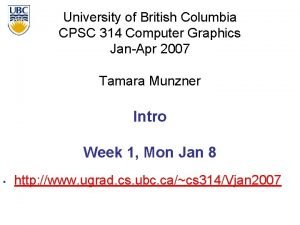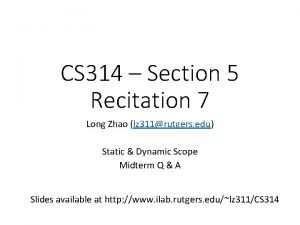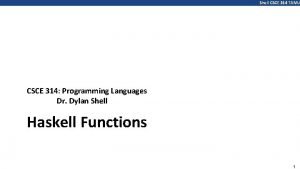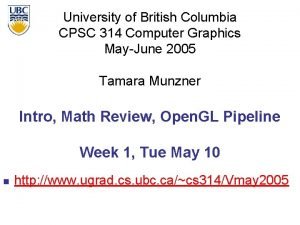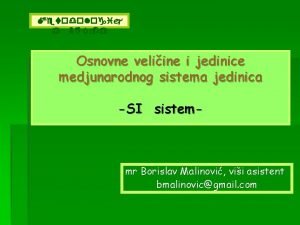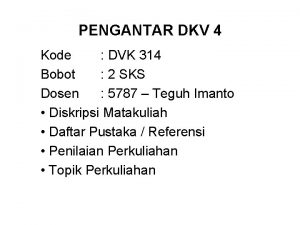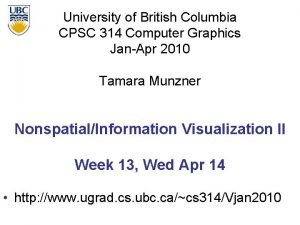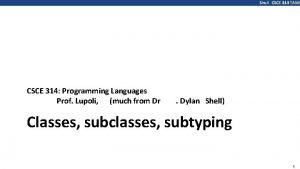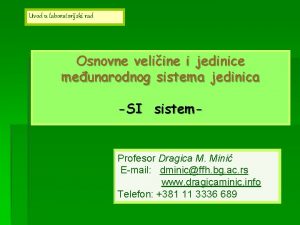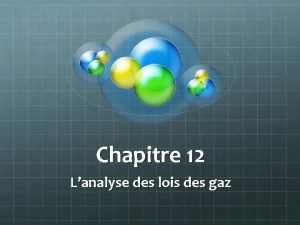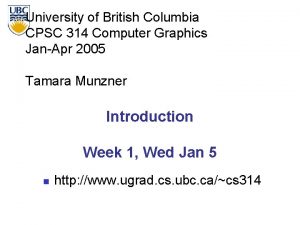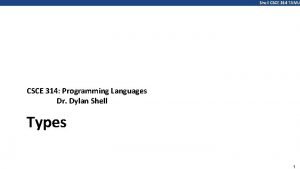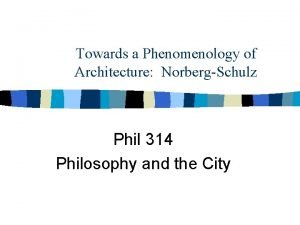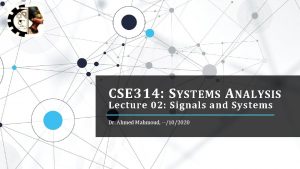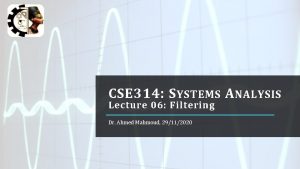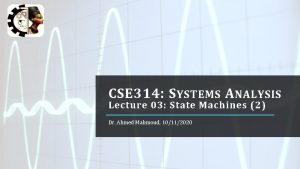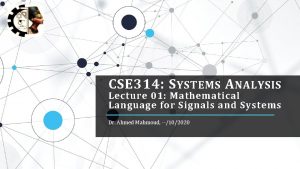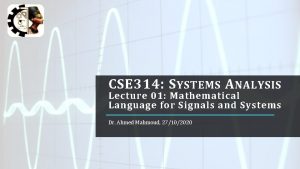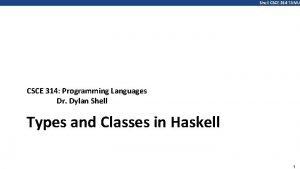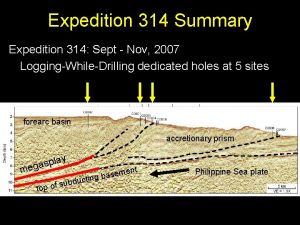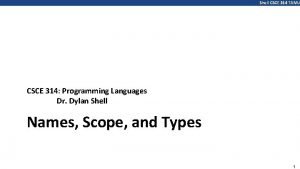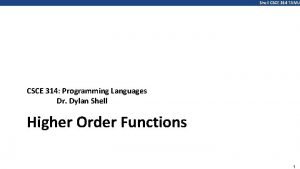CSE 314 S YSTEMS A NALYSIS Lecture 05















- Slides: 15

CSE 314: S YSTEMS A NALYSIS Lecture 05: Feedback State Machines Dr. Ahmed Mahmoud, --/10/2020

Feedback Composition • In simple feedback systems, an output from a state machine is fed back as an input to the same state machine. • In more complicated feedback systems, several state machines might be connected in a loop. • Feedback is a subtle form of composition in the synchronous model. • For synchronous composition models, in a reaction, the output symbol of a state machine is simultaneous with the input symbol. • The output symbol of a machine in feedback composition depends on an input symbol that depends on its own output symbol! --/10/2020 CSE 314: SYSTEMS ANALYSIS 2

Fixed Point (1) --/10/2020 CSE 314: SYSTEMS ANALYSIS 3

Fixed Point (2) --/10/2020 CSE 314: SYSTEMS ANALYSIS 4

Ill-formed vs. Well-formed --/10/2020 CSE 314: SYSTEMS ANALYSIS 5

Feedback Composition With No Inputs (1) • The alphabet for inputs and outputs are: • For feedback connection to be possible: • The challenge is to find --/10/2020 to satisfy: CSE 314: SYSTEMS ANALYSIS 6

Feedback Composition With No Inputs (2) --/10/2020 CSE 314: SYSTEMS ANALYSIS 7

Well-Formed Feedback Composition --/10/2020 CSE 314: SYSTEMS ANALYSIS 8

State-Determined Output --/10/2020 CSE 314: SYSTEMS ANALYSIS 9

Example on State-Determined Output • A is state-determined output, B is NOT. • The feedback composition is wellformed: • It is not necessary for machine A to be state-determined output to have a well-formed feedback composition. CSE 314: SYSTEMS ANALYSIS --/10/2020 10

Feedback Composition With Inputs (1) --/10/2020 CSE 314: SYSTEMS ANALYSIS 11

Feedback Composition With Inputs (2) is the unique solution for output equations. --/10/2020 CSE 314: SYSTEMS ANALYSIS 12

Example Feedback Composition With Inputs --/10/2020 CSE 314: SYSTEMS ANALYSIS 13

Constructive Procedure for Feedback Composition --/10/2020 CSE 314: SYSTEMS ANALYSIS 14

Challenges of Constructive Procedure for Feedback Composition • This procedure can be applied in general to any composition of state machines. • If the procedure can be applied successfully (nothing remains unknown) for all reachable states of the composition, then the composition is well-formed. • The sort of reasoning in this more complicated example is difficult and error-prone for even moderate compositions of state machines. It is best automated. Compilers for synchronous languages do exactly this. Successfully compiling a program involves proving that feedback loops are well-formed. • If a feedback composition has one or more machines with state-determined output, then finding a unique fixed point is easy. Without such state-determined output, we can apply the procedure in the previous section. Unfortunately, if the procedure fails, we cannot conclude that the composition is ill-formed. --/10/2020 CSE 314: SYSTEMS ANALYSIS 15

